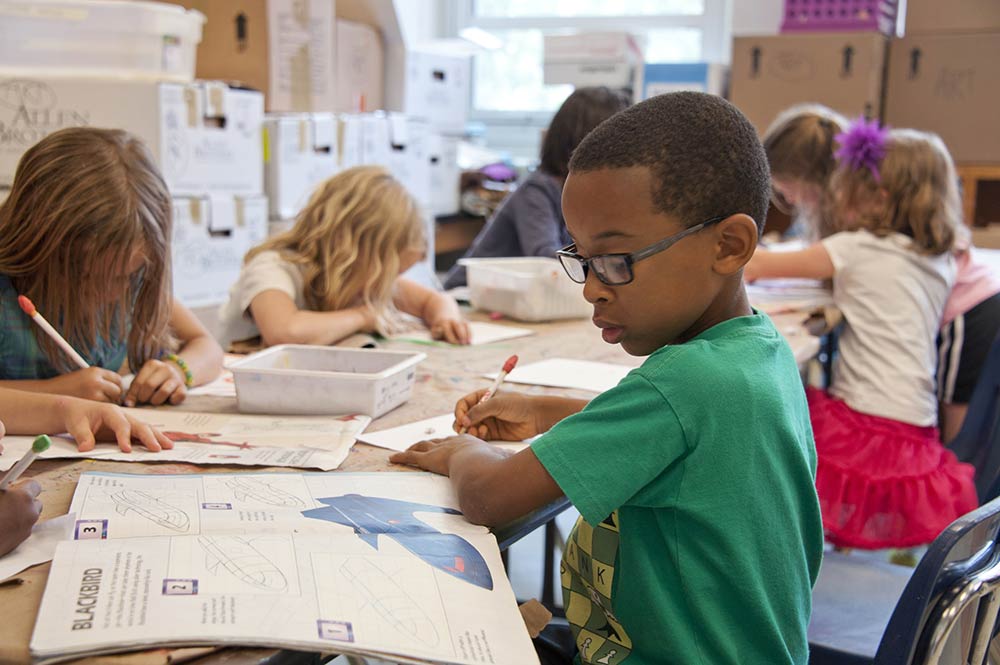 When it comes to building a strong college application, shifting policies have upended the college admissions process causing confusion and anxiety for many of our students and families. These changes also resulted in a swell of applications, making the competition for spots even more significant. During the 2020-2021 and 2021-2022 school years, many elite universities made SAT and ACT scores optional, and many but not all continued this policy for the 2022-2023 school year—while the University of California system remains intent on phasing them out entirely. Moreover, in January 2021, the College Board announced that it will no longer offer SAT subject tests or the optional SAT Essay. However, it’s unclear what testing policies will be in place for the 2023-2024 school year.
When it comes to building a strong college application, shifting policies have upended the college admissions process causing confusion and anxiety for many of our students and families. These changes also resulted in a swell of applications, making the competition for spots even more significant. During the 2020-2021 and 2021-2022 school years, many elite universities made SAT and ACT scores optional, and many but not all continued this policy for the 2022-2023 school year—while the University of California system remains intent on phasing them out entirely. Moreover, in January 2021, the College Board announced that it will no longer offer SAT subject tests or the optional SAT Essay. However, it’s unclear what testing policies will be in place for the 2023-2024 school year.
For high achieving students who attend a rigorous high school and plan to submit stellar test scores to differentiate themselves from the pack, they should stay the course and exceed admissions requirements. Submitting strong test scores remains strategically advantageous. But having the option allows students to think more creatively about their application package, and there are other ways to build or enhance a strong college application with or without standardized test scores.
First, lean into your AP exams. In its announcement of the policy change, the College Board indicated that the increasing popularity of AP exams has made their own subject tests extraneous. While APs have always been used as an indication of students’ ability to excel in demanding, college-level classes, going forward, high scores will be even more important in helping applicants show their strengths.
Aside from studying for your APs, use the time you would have spent preparing for other standardized tests to work on a self-directed project. Nobody enjoys spending their Saturday afternoons on timed practice tests or staying up late to drill flashcards. If you have an idea of what you’d rather be working on—whether it’s developing an app or directing a short film—put your energy into that. Being able to design and execute a complex project is a much better indication of whether a student will succeed in the open environment of a university than their ability to take a standardized test. More importantly, your choice of project tells the admissions committee who you are, which makes for a strong college application.
Independent projects will give admissions officers greater insight into your character, especially if you have an artistic inclination. Spend your senior year honing your talent by doing enrichment activities. Many of the extracurriculars students would normally participate in have not been possible, but you can always play the piano or sketch the view outside your window. Applications with fine art portfolios, concert footage, and short films—even to schools where the arts are not the focus—round out your application and distinguish you from other students. Creative projects also more directly reflect your personality, and they make for great material when it comes time to write your Common App essay and supplements.
If you’re not the artistic type, consider opportunities in science, math, engineering, or business. These can be more structured, like participating in online summer courses offered through universities, like Columbia’s SHAPE program, or more open-ended, like creating and managing an investment portfolio. Even without access to a laboratory, young scientists can collaborate with other students from not just their school, but around the world to develop and implement advanced research projects. Johns Hopkins has put together a very thorough list of high school science competitions that can help build a strong college application (especially if you win!)
Lastly, if you want to build a strong college application, consider volunteering. Many high school students are required to complete some kind of volunteer work in order to graduate. However, the reality is that these activities are often rushed, and admissions officers can spot the difference between box-ticking and genuine commitment. The point of volunteer work is to serve a community you’re a member of or help a cause you care about. Long-term work at local animal shelters and food pantries, or with national groups, like Habitat for Humanity, tell admissions officers not just how you like to spend your free time—but how you aim to make the world a better place. During the era of COVID, there are even more opportunities for young people to help and to gain experience in the medical professions.
For students who have always been excellent test-takers, all of these announcements may come as a shock, but for others, the new admissions policies will be a welcome change. Your grades and AP exam scores will take on greater importance, but you will also have more freedom in how you want to individualize and build a strong college application. Instead of focusing on extra tests, use this time to think about what you really want to do—in college and beyond—and then try doing it!
Written by Brad Hoffman, M.S.Ed. and Board Certified Educational Planner, and Faya Hoffman, M.S. and Board Certified Educational Planner.
 Developing executive function skills encompasses addressing both distractions and special interests to help students learn how to regulate impulsive thoughts, persevere with less interesting or undesirable tasks, and manage time. An important concept to understand when developing executive function skills is “shared relevance”.
Developing executive function skills encompasses addressing both distractions and special interests to help students learn how to regulate impulsive thoughts, persevere with less interesting or undesirable tasks, and manage time. An important concept to understand when developing executive function skills is “shared relevance”. The importance of thinking about thinking cannot be understated, especially for students who learn differently or find themselves struggling to keep up. Metacognition, defined as “the awareness and understanding of one’s own thought processes,” builds independence and resilience among students by allowing them to recognize unhelpful habits and negative self-talk. Metacognition enhances the development of executive function skills; student learn to actively reflect, think strategically, and put on their future glasses. A student with limited metacognitive ability might stare for 30 minutes at a worksheet, only to conclude that they “cannot think of anything to write about” or simply “can’t do it.” On the other hand, a more metacognitively aware student in the same situation might be able to ask themself, “Why am I having a hard time with this assignment, and what can I do to change that?”
The importance of thinking about thinking cannot be understated, especially for students who learn differently or find themselves struggling to keep up. Metacognition, defined as “the awareness and understanding of one’s own thought processes,” builds independence and resilience among students by allowing them to recognize unhelpful habits and negative self-talk. Metacognition enhances the development of executive function skills; student learn to actively reflect, think strategically, and put on their future glasses. A student with limited metacognitive ability might stare for 30 minutes at a worksheet, only to conclude that they “cannot think of anything to write about” or simply “can’t do it.” On the other hand, a more metacognitively aware student in the same situation might be able to ask themself, “Why am I having a hard time with this assignment, and what can I do to change that?” Reading
Reading  For
For